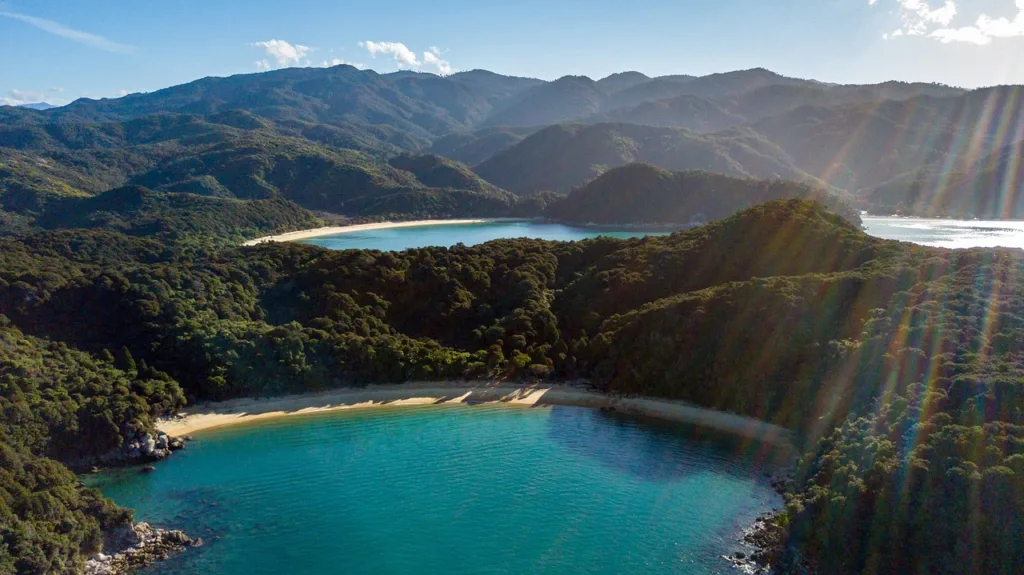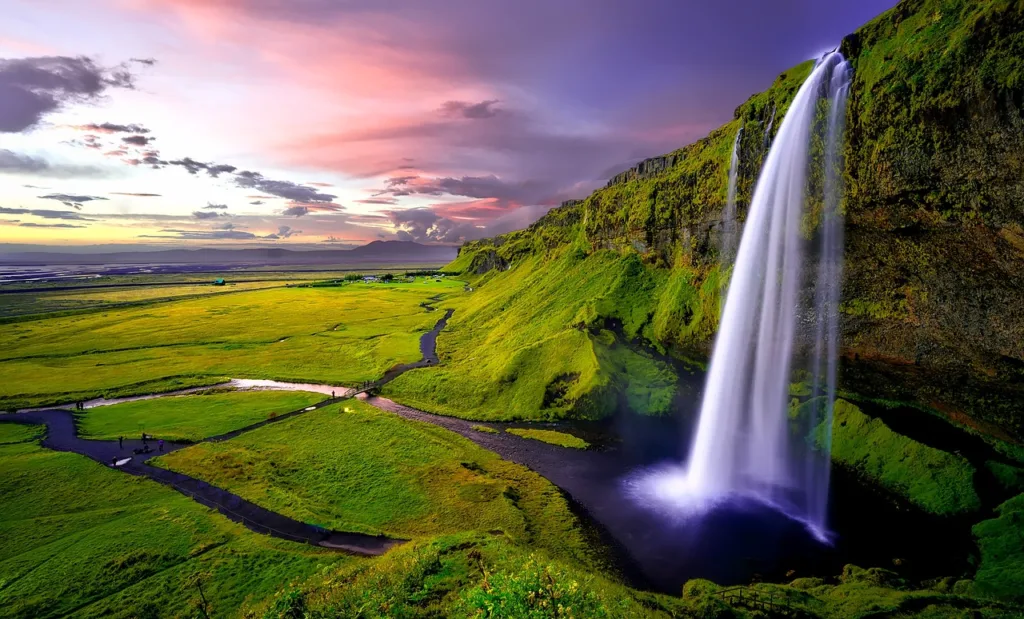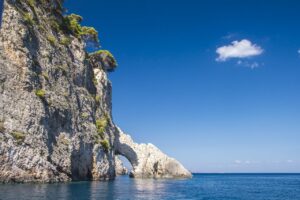In an era marked by growing concerns about environmental conservation and reducing our carbon footprint, sustainable travel has emerged as a powerful means of exploring the world while minimizing our impact on the planet. By choosing eco-friendly destinations and supporting initiatives that prioritize environmental stewardship, travelers can make a positive difference and contribute to the preservation of our natural resources and cultural heritage. In this comprehensive and in-depth article, we will embark on an enlightening journey to explore some of the most remarkable eco-friendly destinations and innovative initiatives that promote sustainable travel. We will delve into the unique features, conservation efforts, and green practices that make these places truly exceptional, providing an immersive experience for eco-conscious travelers seeking meaningful and responsible adventures.
1. Costa Rica: A Haven of Biodiversity and Conservation
Nestled in Central America, Costa Rica stands as a beacon of sustainability and a model for eco-friendly travel. With an impressive 25% of its land designated as protected areas, it is a destination that values its exceptional biodiversity. Travelers can explore the country’s renowned national parks, such as Corcovado and Manuel Antonio, where they will encounter lush rainforests, diverse wildlife, and stunning natural wonders. Costa Rica’s commitment to sustainability extends beyond its protected areas. The country is dotted with eco-lodges that employ renewable energy sources, prioritize responsible waste management, and actively engage with local communities. Visitors can immerse themselves in unique initiatives like carbon offset programs, reforestation projects, and organic farming, all of which contribute to Costa Rica’s reputation as a sustainable travel paradise.
2. Bhutan: The World’s First Carbon-Negative Country
Nestled in the heart of the Himalayas, Bhutan has adopted a holistic approach to development centered around the philosophy of Gross National Happiness (GNH). This philosophy places equal importance on economic progress, cultural preservation, and environmental conservation. Travelers to Bhutan can explore the country’s pristine landscapes, including the breathtaking Paro Valley and the remote Haa Valley, while witnessing the success of Bhutan’s commitment to preserving its forests and maintaining a carbon-negative status. Bhutan’s low-impact tourism policy ensures limited visitor numbers, allowing travelers to experience the country’s unique culture and spirituality while minimizing the impact on the environment. Throughout Bhutan, initiatives focus on sustainable agriculture, renewable energy sources, and the preservation of cultural heritage, making it an exceptional destination for eco-conscious travelers seeking an authentic and transformative experience.
3. The Netherlands: Pioneering Sustainable Urban Planning
The Netherlands is renowned for its progressive approach to sustainable urban planning and its dedication to creating livable, eco-friendly cities. Amsterdam, the country’s capital, is a prime example of sustainable urban living. Travelers can explore Amsterdam’s bike-friendly culture and world-class cycling infrastructure, which allows residents and visitors alike to navigate the city in an environmentally friendly manner. The city’s commitment to renewable energy sources is evident with windmills dotting the landscape and solar panels adorning rooftops. Beyond its urban areas, the Netherlands boasts green spaces such as Vondelpark, where visitors can escape the urban hustle and connect with nature. In addition, the country is home to initiatives like circular economy projects, electric transportation, and sustainable hotel practices, demonstrating the Netherlands’ dedication to sustainable living and serving as an inspiration for other cities around the world.
4. The Galapagos Islands: Protecting Fragile Ecosystems
Located in the Pacific Ocean, the Galapagos Islands are a treasure trove of unique biodiversity and evolutionary wonders. Recognized as a UNESCO World Heritage Site, the islands prioritize conservation efforts to protect their exceptional flora and fauna. Travelers can delve into the Galapagos National Park’s strict visitor regulations, which aim to minimize the impact of tourism on delicate ecosystems. By adhering to these regulations, visitors can experience the islands’ awe-inspiring landscapes and encounter iconic species such as the Galapagos giant tortoise and marine iguanas, all while actively contributing to their conservation. The islands are home to eco-tourism operators and organizations that work tirelessly to preserve the natural wonders through sustainable practices and educational initiatives. By supporting these initiatives, travelers can play a vital role in safeguarding the Galapagos’ fragile ecosystems for generations to come.
5. New Zealand: A Paradise of Sustainable Adventure
New Zealand‘s breathtaking landscapes, including fjords, mountains, and pristine coastlines, provide an awe-inspiring backdrop for sustainable adventure travel. The country’s commitment to sustainability is evident in its conservation efforts and progressive environmental policies. Travelers can explore the spectacular Milford Sound, hike through the majestic Tongariro National Park, or kayak along the pristine Abel Tasman coast. New Zealand’s dedication to sustainable farming practices, renewable energy projects, and conservation initiatives, such as predator eradication programs to protect native bird species, are visible throughout the country. Additionally, visitors can immerse themselves in the Maori culture, which promotes a strong connection to the land and fosters sustainable practices. By engaging in sustainable adventure activities and supporting eco-conscious operators, travelers can experience the magic of New Zealand while preserving its natural heritage for future generations.

6. The Green Initiatives of Copenhagen, Denmark
Copenhagen, the capital of Denmark, stands as a shining example of a city committed to green initiatives and sustainable living. Travelers can explore the city’s innovative approach to urban planning, which prioritizes cycling infrastructure, pedestrian-friendly neighborhoods, and green spaces. Copenhagen’s goal of becoming carbon-neutral by 2025 is supported by an ambitious transition to renewable energy sources and the promotion of electric transportation. Throughout the city, visitors can discover green spaces like King’s Garden, a historic park with sustainable design elements, and explore the sustainable neighborhood of Ørestad, showcasing how sustainable architecture can integrate green spaces and renewable energy systems. Additionally, initiatives such as organic food markets, sustainable fashion, and urban farming projects contribute to Copenhagen’s reputation as a sustainable and livable city, inspiring visitors to embrace eco-friendly practices during their stay.
7. Iceland: Harnessing Renewable Energy and Protecting Landscapes
Iceland is renowned for its breathtaking landscapes, including volcanic terrain, glaciers, and geothermal hot springs. What makes it even more remarkable is its commitment to sustainable practices. Iceland relies heavily on renewable energy sources, particularly geothermal and hydroelectric power, to meet its energy needs. Travelers can witness the country’s geothermal energy in action by visiting the Blue Lagoon, a natural hot spring powered by volcanic activity. Additionally, Iceland has strict conservation measures in place to protect its fragile ecosystems. Travelers can explore national parks like Thingvellir and Vatnajökull, where they can marvel at dramatic landscapes while appreciating the importance of preserving these natural wonders. By supporting eco-conscious accommodations and tour operators that promote responsible tourism, visitors can contribute to Iceland’s ongoing efforts to maintain its pristine environment.

8. Costa Navarino, Greece: Sustainable Luxury and Cultural Preservation
Located in the southwestern region of Peloponnese, Costa Navarino is a prime example of sustainable luxury tourism. The destination focuses on preserving the region’s rich cultural heritage while implementing eco-friendly practices. The area boasts luxury resorts, such as The Romanos and The Westin Resort, which have achieved numerous sustainability certifications and emphasize responsible tourism. Costa Navarino prioritizes environmental conservation by implementing energy-efficient systems, utilizing local and organic produce, and supporting local communities. Travelers can explore the region’s archaeological sites, including the ancient city of Messini, and engage in activities that promote cultural immersion and appreciation. By choosing Costa Navarino as a travel destination, visitors can experience the beauty of Greece while supporting sustainable tourism practices that safeguard the local environment and traditions.
With an increasing global focus on environmental responsibility, sustainable travel has become more than just a trend; it has become a necessity. Exploring eco-friendly destinations and supporting initiatives that prioritize sustainability allows us to enjoy the beauty of our planet while minimizing our impact on it. From the biodiversity of Costa Rica to the carbon-negative philosophy of Bhutan, the sustainable urban planning of the Netherlands, the conservation efforts in the Galapagos Islands, the adventure opportunities in New Zealand, the green initiatives in Copenhagen, and the renewable energy practices in Iceland and cultural preservation in Costa Navarino, each destination offers unique experiences and lessons in sustainable travel. By making conscious choices and supporting responsible tourism, we can contribute to the preservation of our planet’s natural wonders and cultural heritage. Let us embrace sustainable travel as a transformative force and leave a positive legacy for future generations, ensuring that they too can experience the joy and beauty of exploring our world while preserving it for years to come.





